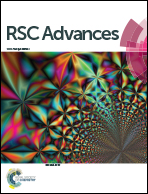A scalable, ecofriendly, and cost-effective lithium metal protection layer from a Post-it note†
Abstract
Although there have been many studies addressing the dendrite growth issue of lithium (Li)–metal batteries (LMBs), the Li–metal anode has not yet been implemented in today's rechargeable batteries. There is a need to accelerate the practical use of LMBs by considering their cost-effectiveness, ecofriendliness, and scalability. Herein, a cost-effective and uniform protection layer was developed by simple heat treatment of a Post-it note. The carbonized Post-it protection layer, which consisted of electrochemically active carbon fibers and electrochemically inert CaCO3 particles, significantly contributed to stable plating and stripping behaviors. The resulting protected Li anode exhibited excellent electrochemical performance: extremely low polarization during cycling (<40 mV at a current density of 1 mA cm−2) and long lifespan (5000 cycles at 10 mA cm−2) of the symmetric cell, as well as excellent rate performance at 2C (125 mA h g−1) and long cyclability (cycling retention of 62.6% after 200 cycles) of the LiFePO4‖Li full cell. The paper-derived Li protection layer offer a facile and scalable approach to enhance LMB electrochemical performance.



 Please wait while we load your content...
Please wait while we load your content...